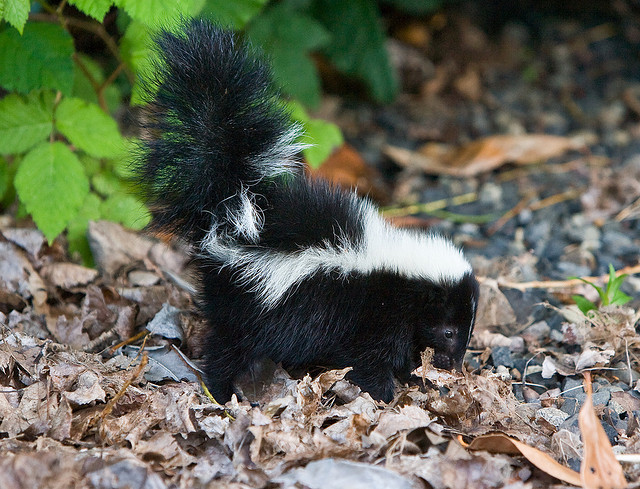Wildlife and Rabies

Not only is there a variable incubation period, not all wildlife exhibit the same symptoms. Skunks, foxes, raccoon and dogs usually display what is called “furious rabies”
“Furious Rabies” symptoms:
• agitation
• restlessness
• unprovoked aggression
• animals may attack anything that moves and even inanimate objects
BATS often display what is referred to as “dumb rabies”
“Dumb Rabies” symptoms:
• unusual friendliness
• may be found on the ground unable to fly
• animal may stumble
• appear disoriented
• uncoordinated
• wander aimlessly
Other common rabies symptoms:
• depression
• paralysis, often beginning in the hind legs or throat• drooling and frothing at the mouth.
• vocalizations ranging from chattering to shrill screams.
• nocturnal animals may become unusually active during the day
• raccoon have a tendency to walk as if they’re on very hot pavement
There are several other illness that may mirror rabies, such as distemper and toxoplasmosis. Unless you are certain, stay away! Avoid the animal and keep your pet away from the animal too! Treatment for human infection is painful and if you do not receive treatment in time, it will likely be fatal. Not just fatal, but an excruciatingly painful death. I myself have only had one rabies encounter. Animal Control brought in a German Shepard that was infected. I will never forget the sight of that poor dog and how disgusted I was with the owners for not having him vaccinated in the first place.The poor dog was in pain and just so far gone. He obviously had to be euthanized. There is no cure for rabies but the good news is rabies is preventable. Vaccinate your pets and stay alert when outdoors.
Photo courtesy of R0Ng, used with permisssion












